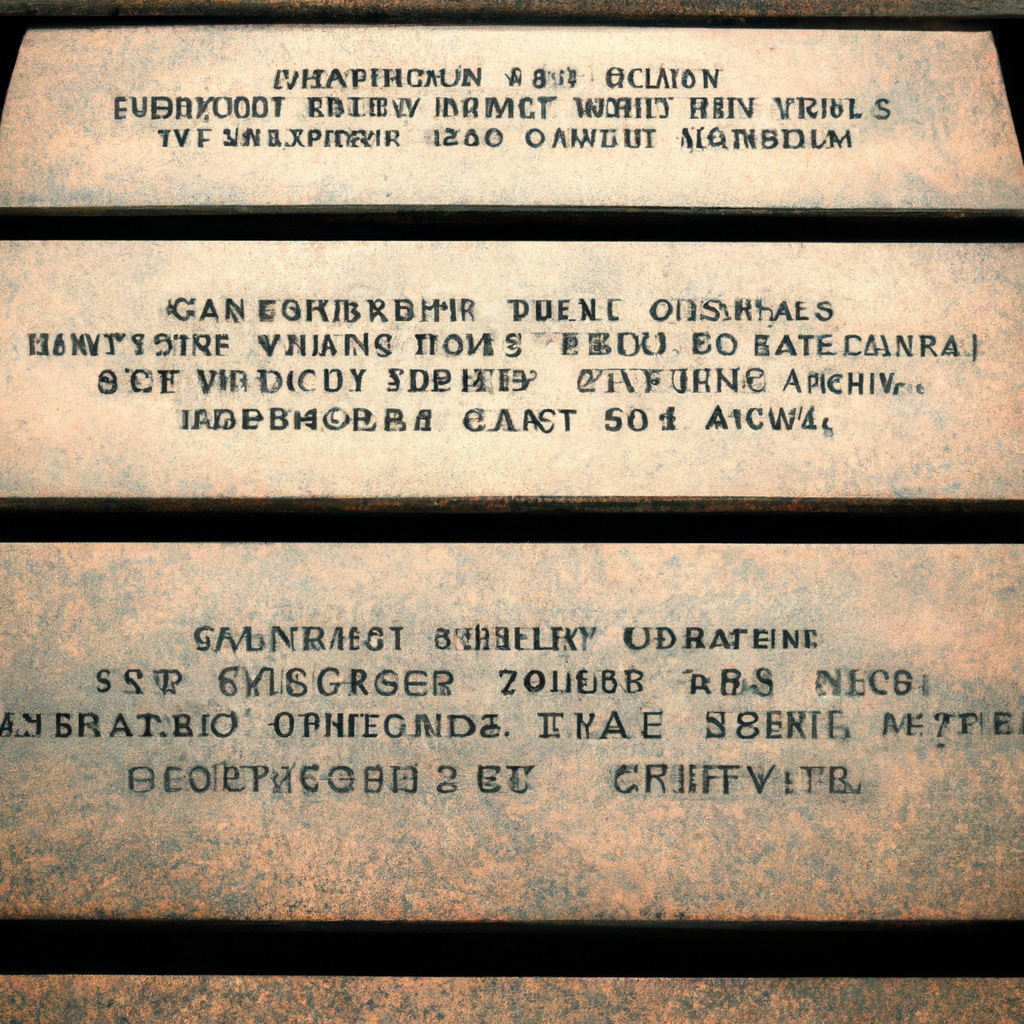Have you ever come across a beautifully engraved plaque and marveled at the intricate details? Engraved plaques are not just ordinary signs; they are works of art that commemorate special moments, recognize achievements, and leave a lasting impression. In this article, we will explore the craftsmanship involved in creating engraved plaques, from the history of engraving to the meticulous techniques used by master engravers.
The Art of Engraving
History of Engraving
Engraving has a rich history dating back centuries. The art of engraving originated in ancient civilizations, where craftsmen used sharp tools to carve designs onto various materials such as wood, stone, and metal. Over time, this technique evolved, and engraving became a respected art form, symbolizing prestige and excellence.
Tools and Techniques
Engraving requires precision and skill, and modern-day engravers employ a variety of tools to achieve remarkable results. Traditional hand tools such as burins and gravers are still used, alongside modern equipment like rotary engraving machines and laser engravers. Each tool offers unique capabilities and allows engravers to bring their creative visions to life.
Exploring Engraved Plaques
Significance and Uses
Engraved plaques hold immense significance in various contexts. They serve as markers of achievement in sports, acknowledge important milestones in businesses, and pay tribute to individuals who have made a lasting impact. Whether it’s a dedication plaque on a bench in a park or a recognition plaque in a corporate setting, engraved plaques add a touch of elegance and permanence to their surroundings.
Types of Engraved Plaques
Engraved plaques come in various forms, catering to different purposes and preferences. Some common types include memorial plaques, award plaques, nameplates, and donor plaques. Each type presents an opportunity for engravers to showcase their skills and adapt their techniques to suit the specific requirements of the project.
Mastering the Craftsmanship
Attention to Detail
Master engravers possess an unwavering commitment to detail. They meticulously plan each engraving, considering factors such as font selection, spacing, and design layout. By paying close attention to even the smallest elements, they ensure the final product is aesthetically pleasing and accurately represents the intended message.
Skillful Design
Design plays a crucial role in the art of engraving. Expert engravers skillfully combine typography, graphics, and decorative elements to create visually striking compositions. They understand how different engraving techniques interact with various materials, maximizing the impact of their designs and elevating the overall appeal of the engraved plaques.
Quality Materials
The choice of materials significantly influences the outcome of an engraved plaque. Master engravers select materials that align with the purpose and environment of the plaque, considering factors such as durability, color, and texture. Whether it’s solid brass, stainless steel, or acrylic, the material enhances the engraving and ensures longevity.
The Engraving Process
Designing the Layout
Before the engraving process begins, meticulous planning is crucial. Master engravers carefully design the layout, considering the size, shape, and position of the text and graphics. They create a digital or physical mock-up, allowing clients to visualize the final product and make any necessary adjustments.
Transferring the Design
Once the design is finalized, it needs to be transferred onto the plaque’s surface. This can be achieved through various methods, including tracing, stencil application, or digital printing. Precision is vital during this step to ensure accurate alignment and avoid any errors that may compromise the overall quality of the engraving.
Executing the Engraving
The actual engraving process requires expertise and a steady hand. Engravers skillfully operate their chosen tools, whether it’s a hand engraver delicately carving intricate patterns or a laser engraver precisely etching designs. The depth, pressure, and speed are carefully controlled to achieve the desired results.
Maintaining and Preserving Engraved Plaques
To maintain the beauty and longevity of engraved plaques, proper care is essential. Regular cleaning using mild detergents, avoiding abrasive materials, and protecting the plaques from harsh weather conditions contribute to their preservation. Additionally, periodic inspections and refurbishments by professional engravers can restore faded or damaged engravings, ensuring they continue to shine for years to come.
Conclusion
Engraved plaques exemplify the mastery of craftsmanship and the artistry of engraving. From their historical origins to the meticulous process of design and execution, engraved plaques encapsulate the celebration of achievements and the everlasting remembrance of cherished moments. The next time you encounter an engraved plaque, take a moment to appreciate the skill, dedication, and attention to detail that goes into creating these timeless works of art.
